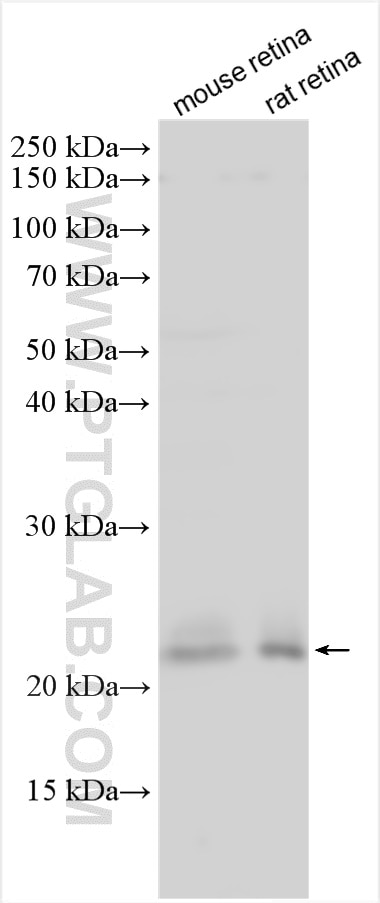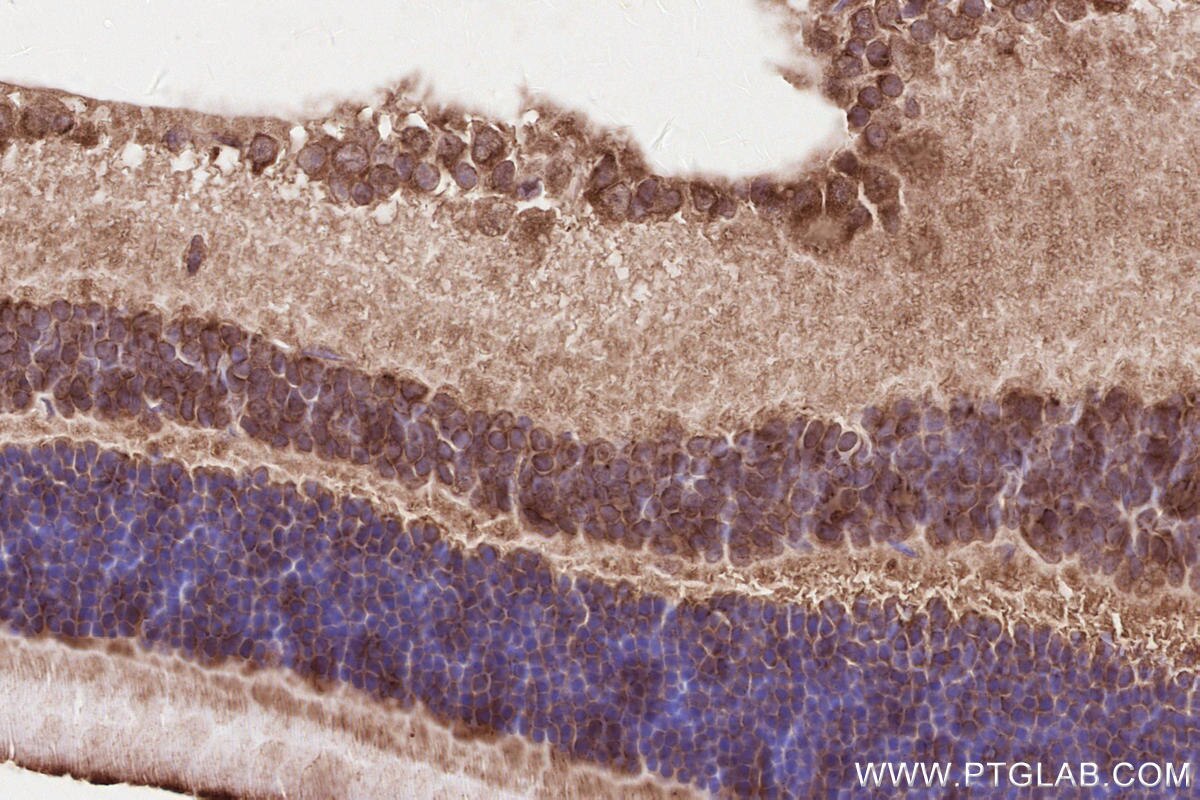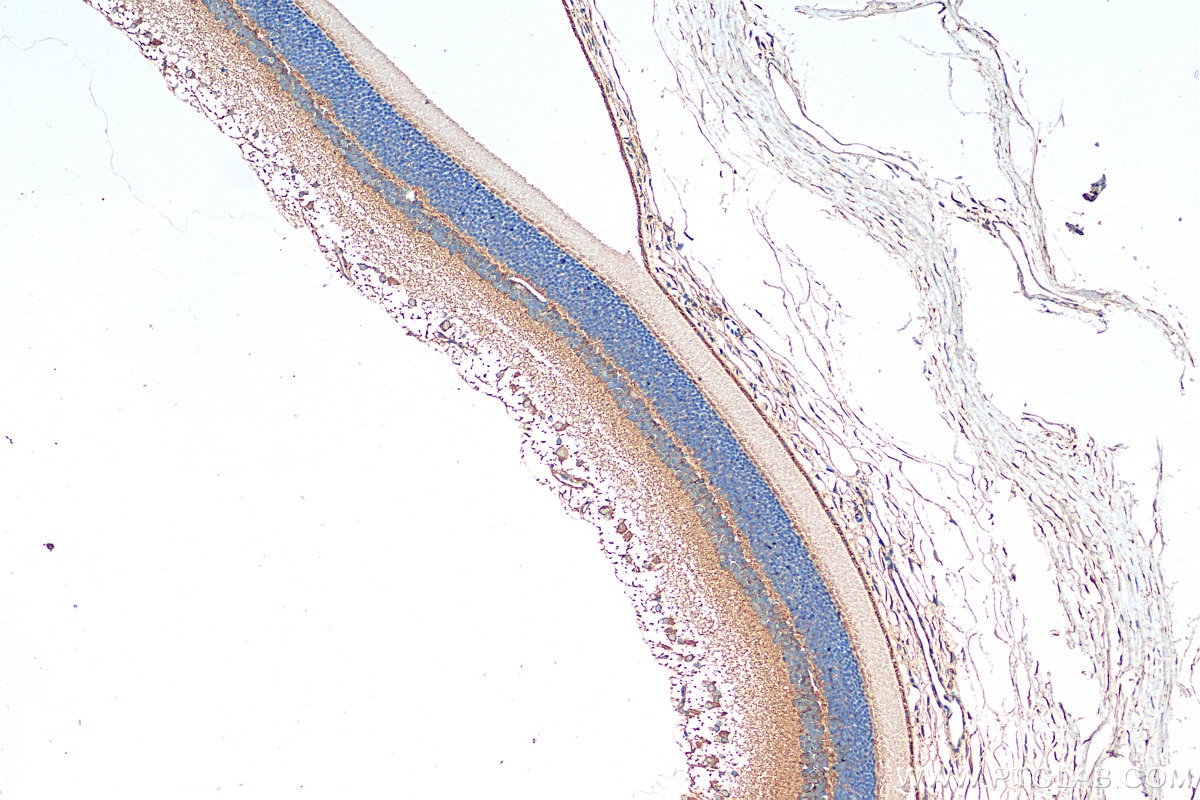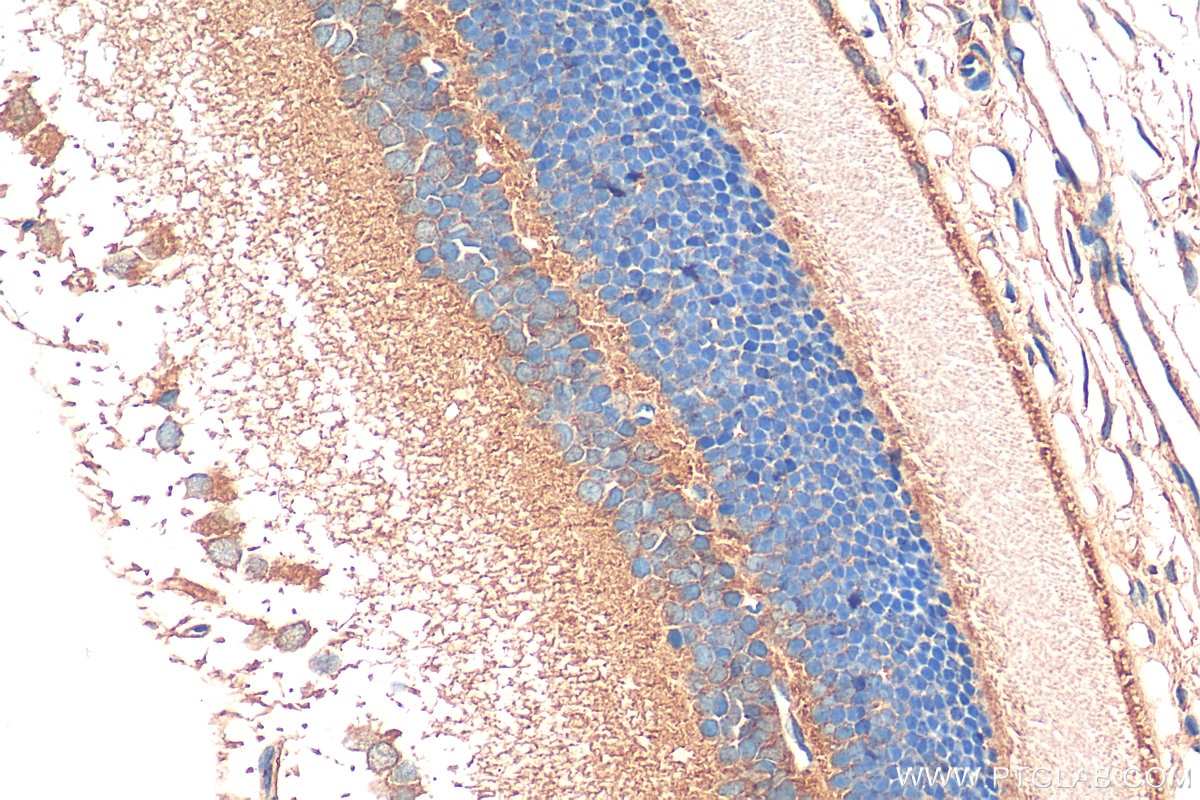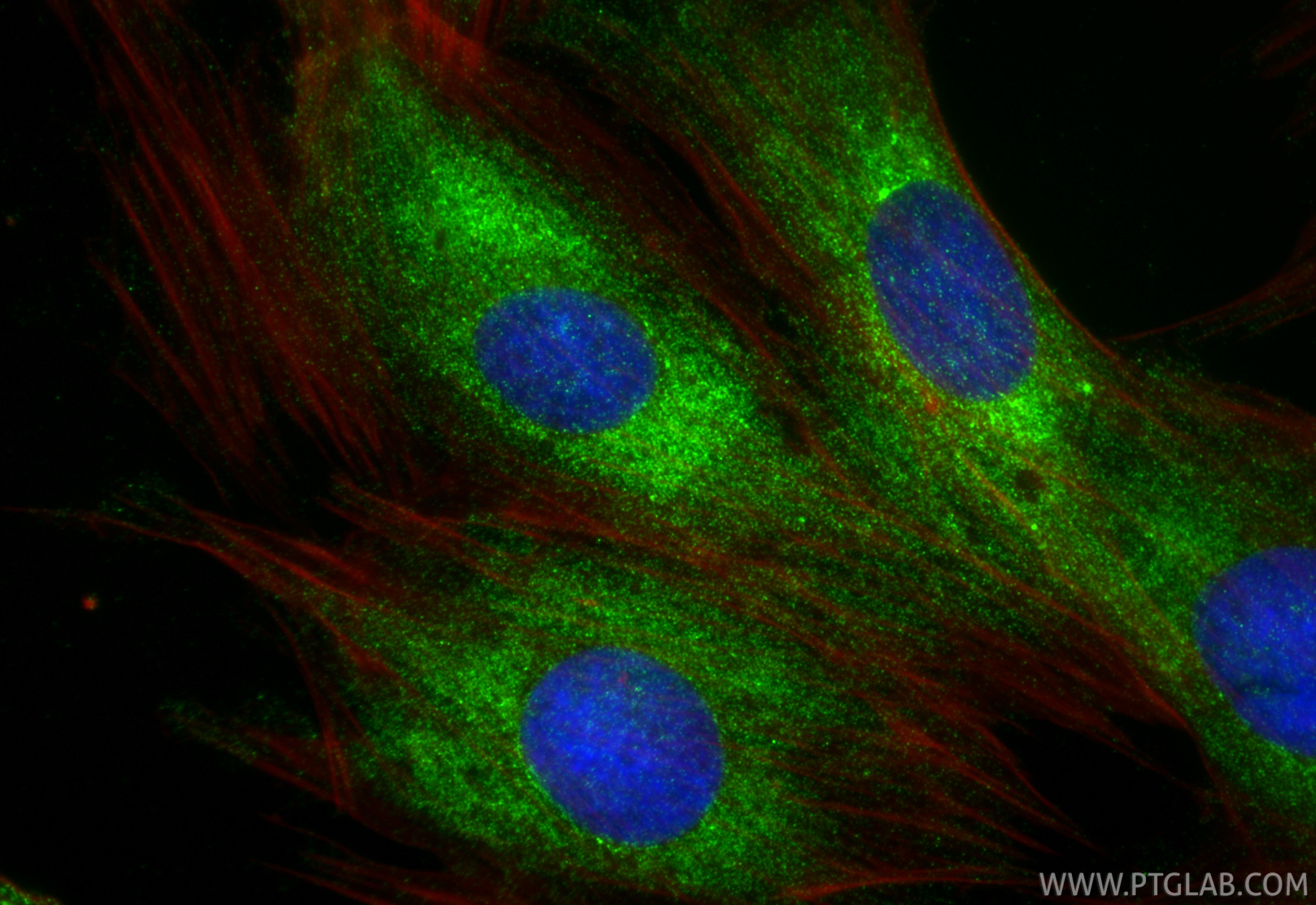RD3 Polyklonaler Antikörper
RD3 Polyklonal Antikörper für WB, IHC, IF/ICC, ELISA
Wirt / Isotyp
Kaninchen / IgG
Getestete Reaktivität
human, Maus, Ratte
Anwendung
WB, IHC, IF/ICC, ELISA
Konjugation
Unkonjugiert
Kat-Nr. : 14855-1-AP
Synonyme
Geprüfte Anwendungen
| Erfolgreiche Detektion in WB | Maus-Retina-Gewebe, Ratten-Retina-Gewebe |
| Erfolgreiche Detektion in IHC | Ratten-Augengewebe, Maus-Augengewebe Hinweis: Antigendemaskierung mit TE-Puffer pH 9,0 empfohlen. (*) Wahlweise kann die Antigendemaskierung auch mit Citratpuffer pH 6,0 erfolgen. |
| Erfolgreiche Detektion in IF/ICC | H9C2-Zellen |
Empfohlene Verdünnung
| Anwendung | Verdünnung |
|---|---|
| Western Blot (WB) | WB : 1:500-1:3000 |
| Immunhistochemie (IHC) | IHC : 1:50-1:500 |
| Immunfluoreszenz (IF)/ICC | IF/ICC : 1:50-1:500 |
| It is recommended that this reagent should be titrated in each testing system to obtain optimal results. | |
| Sample-dependent, check data in validation data gallery | |
Produktinformation
14855-1-AP bindet in WB, IHC, IF/ICC, ELISA RD3 und zeigt Reaktivität mit human, Maus, Ratten
| Getestete Reaktivität | human, Maus, Ratte |
| Wirt / Isotyp | Kaninchen / IgG |
| Klonalität | Polyklonal |
| Typ | Antikörper |
| Immunogen | RD3 fusion protein Ag6641 |
| Vollständiger Name | retinal degeneration 3 |
| Berechnetes Molekulargewicht | 22.7 kDa |
| Beobachtetes Molekulargewicht | 23 kDa |
| GenBank-Zugangsnummer | BC065541 |
| Gene symbol | RD3 |
| Gene ID (NCBI) | 343035 |
| Konjugation | Unkonjugiert |
| Form | Liquid |
| Reinigungsmethode | Antigen-Affinitätsreinigung |
| Lagerungspuffer | PBS with 0.02% sodium azide and 50% glycerol |
| Lagerungsbedingungen | Bei -20°C lagern. Nach dem Versand ein Jahr lang stabil Aliquotieren ist bei -20oC Lagerung nicht notwendig. 20ul Größen enthalten 0,1% BSA. |
Hintergrundinformationen
RD3, or Retinal Degeneration 3, plays a critical role in regulating guanylate cyclase (GC) signaling and photoreceptor cell survival (PMID: 30559291). RD3 is highly conserved across vertebrates, with the human protein sharing high sequence identity with other primates and varying degrees of identity with other species (PMID: 29030614). The main functions of RD3 include inhibiting photoreceptor-specific guanylate cyclase activity and promoting the accumulation of retinal membrane guanylyl cyclase (RetGC) in the photoreceptor outer segment (PMID: 30559291). RD3 is essential for the normal expression of RetGC in photoreceptor cells and blocks RetGC catalytic activity. Mutations in the RD3 gene can lead to Leber congenital amaurosis type 12, which results in retinal degeneration. RD3 is also involved in the trafficking of RetGC from the endoplasmic reticulum to the photoreceptor outer segments, which is crucial for maintaining the normal function and survival of photoreceptors (PMID: 34537244).
Protokolle
| PRODUKTSPEZIFISCHE PROTOKOLLE | |
|---|---|
| WB protocol for RD3 antibody 14855-1-AP | Protokoll herunterladen |
| IHC protocol for RD3 antibody 14855-1-AP | Protokoll herunterladenl |
| IF protocol for RD3 antibody 14855-1-AP | Protokoll herunterladen |
| STANDARD-PROTOKOLLE | |
|---|---|
| Klicken Sie hier, um unsere Standardprotokolle anzuzeigen |
